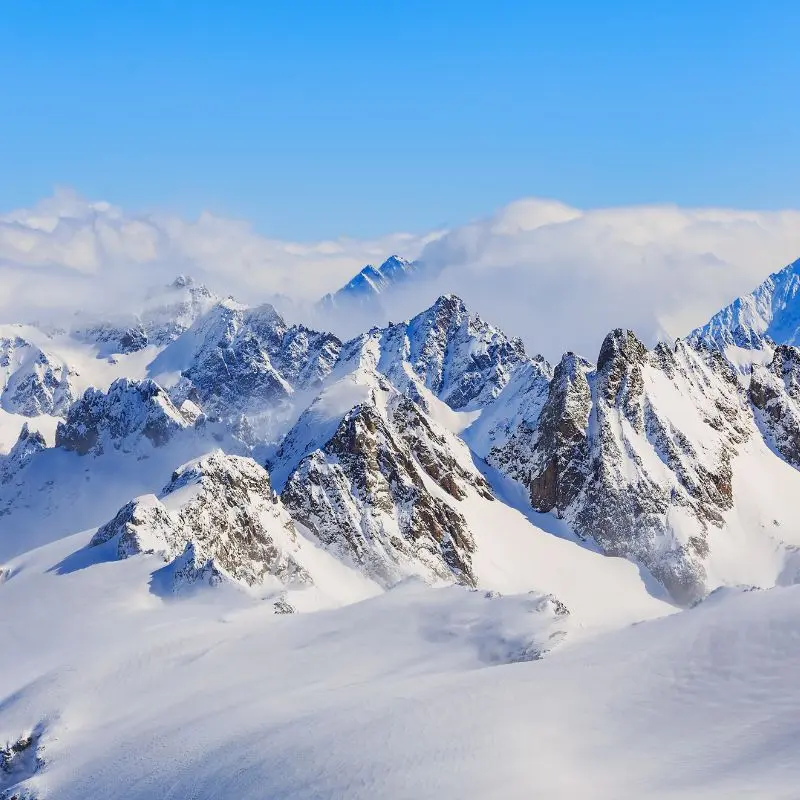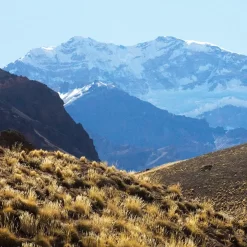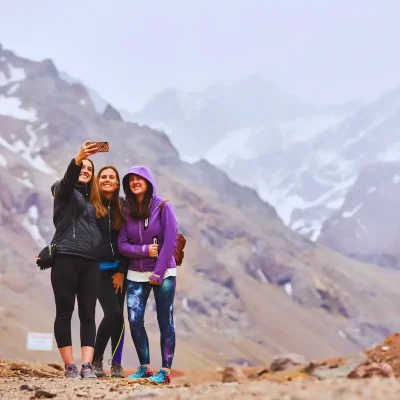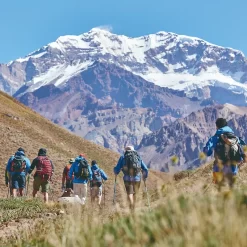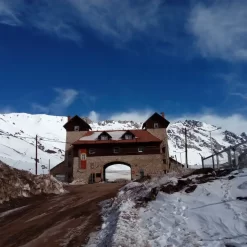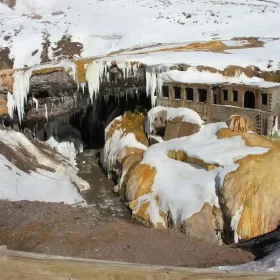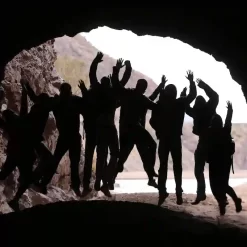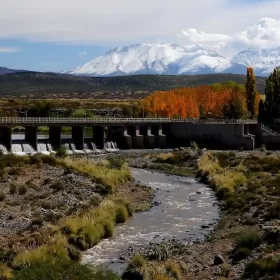Understanding the Climate in Mendoza’s High Mountains
The climate in Mendoza’s high mountains varies dramatically depending on altitude and season. From the temperate plains of the city to the snow-covered peaks near the Chilean border, the weather shifts rapidly and should be considered a key part of trip planning.
Here’s a comparative table to understand the average temperatures in different locations across the elevation gradient:
| Location | Altitude (m) | Summer Day/Night (Dec-Feb) | Winter Day/Night (Jun-Aug) |
|---|---|---|---|
| Mendoza City | 746 | 32°C / 18°C | 15°C / 4°C |
| Potrerillos | 1,200 | 28°C / 14°C | 10°C / -2°C |
| Uspallata | 2,000 | 25°C / 10°C | 8°C / -5°C |
| Las Cuevas | 3,200 | 18°C / 4°C | 2°C / -10°C |
As altitude increases, temperatures drop significantly, especially at night. Summer days can be warm and pleasant, while nights remain cool to cold. Winter often brings snow, ice, and subzero temperatures above 2,000 meters.
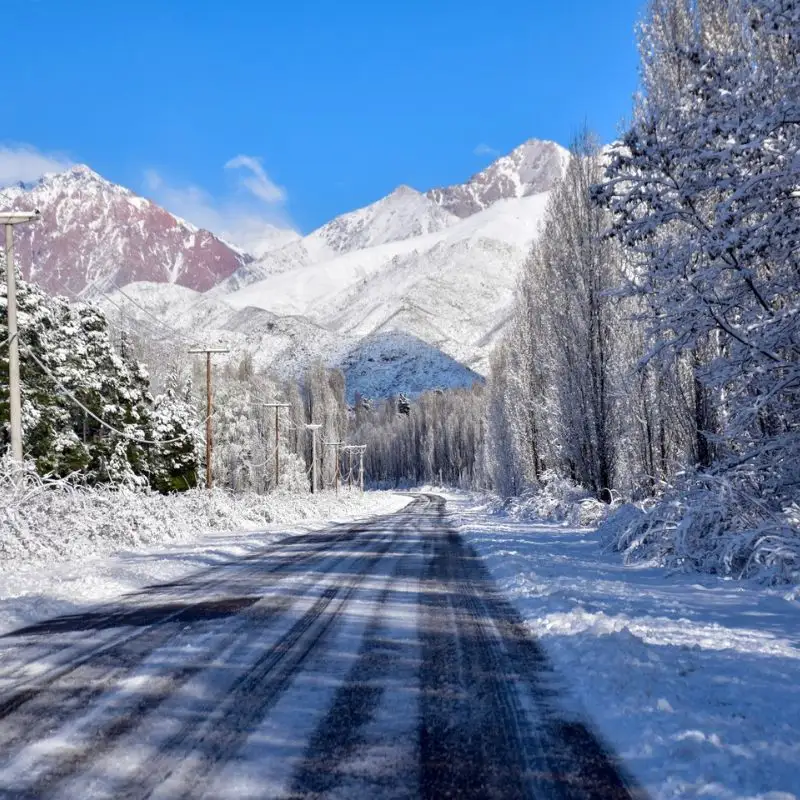
Seasonal Weather Patterns and What to Expect
Spring brings increasing warmth, melting snow, and blooming high-altitude vegetation. Temperatures typically range from 18°C to 28°C by day, dropping to 5–12°C at night. Light rains are more common in October.
Summer is dry, with highs of up to 32°C in Mendoza City and about 20°C in the Andes. Afternoons may bring thunderstorms, and UV radiation is very high. Despite the heat in the lowlands, high-altitude areas remain crisp and pleasant for outdoor adventures.
Autumn offers stable conditions. Warm days and cooler nights create perfect conditions for trekking and photography. With low precipitation and minimal wind, it’s considered one of the safest seasons for exploring mountain terrain.
Winter transforms the range into a snowy landscape. Expect clear skies, low humidity, and frequent snowfall above 2,000 meters. Las Cuevas can record -10°C at night, while Mendoza stays above freezing. Be aware of early evening darkness and road ice.
The Zonda Wind: A Key Weather Phenomenon
The Zonda wind is a powerful foehn wind originating from the Pacific Ocean. As it descends the Andes, it heats and dries rapidly. In Mendoza’s high mountains, it announces itself with warm gusts, sharp temperature spikes, and reduced humidity—often followed by dust, static, and pressure changes that cause migraines and mood shifts in locals.
But its real significance lies in what comes next: a drop in temperature and often a snowstorm. The Zonda typically precedes a cold front, especially in winter and spring. When Zonda conditions are reported in the valleys, you can almost always expect snowfall or sudden weather changes at higher elevations within 24–48 hours. This phenomenon is critical to mountain safety and forecasting.
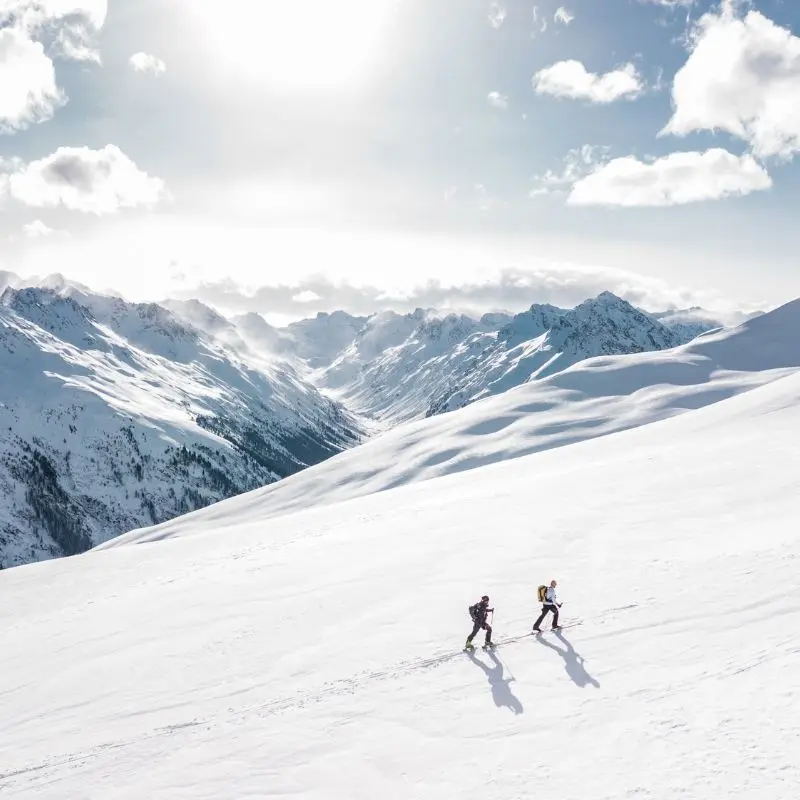
Summer in the High Mountains: Activities and Conditions
Summer in the Andes is dry, luminous, and ideal for mountain adventures. The experience combines fresh air, silence broken only by rushing rivers, and a profound sense of scale as peaks stretch above.
- Try trekking and rappelling in Potrerillos through trails of native vegetation leading to scenic lookout points. End with a rappel descent framed by mountain walls.
- Join white water rafting adventures on the Mendoza River for an adrenaline-filled ride, cooled by splashes from glacial waters.
- Glide through mirror-like waters on a sailing excursion at Potrerillos Lake, where the calm wind and silence enhance the experience.
- Test your balance and enjoy breathtaking panoramas with Stand Up Paddle.
- For thrill-seekers, ziplining across the canyons offers unmatched aerial views and excitement.
These experiences are part of SAK’s curated high mountain tours, adapted seasonally to maximize safety and enjoyment.
Snowfall in Mendoza’s High Mountains: What to Expect
From June to September, the Andes become a winter playground. Families love heading to Los Puquios, Penitentes, and Vallecitos, where snow activities cater to all levels.
At these resorts, kids and adults can rent sleds, snow clothes, and enjoy guided experiences like snowshoeing, snowball fights, or mountain photography. The equipment is available for rent in Mendoza City or Uspallata, and the snow parks provide cafeteria-style meals for lunch breaks.
These are the ideal spots for a family day in the snow, combining views, relaxation, and fun. Just note: when forecasts mention a temporal en alta montaña Mendoza, access beyond Uspallata may be closed.
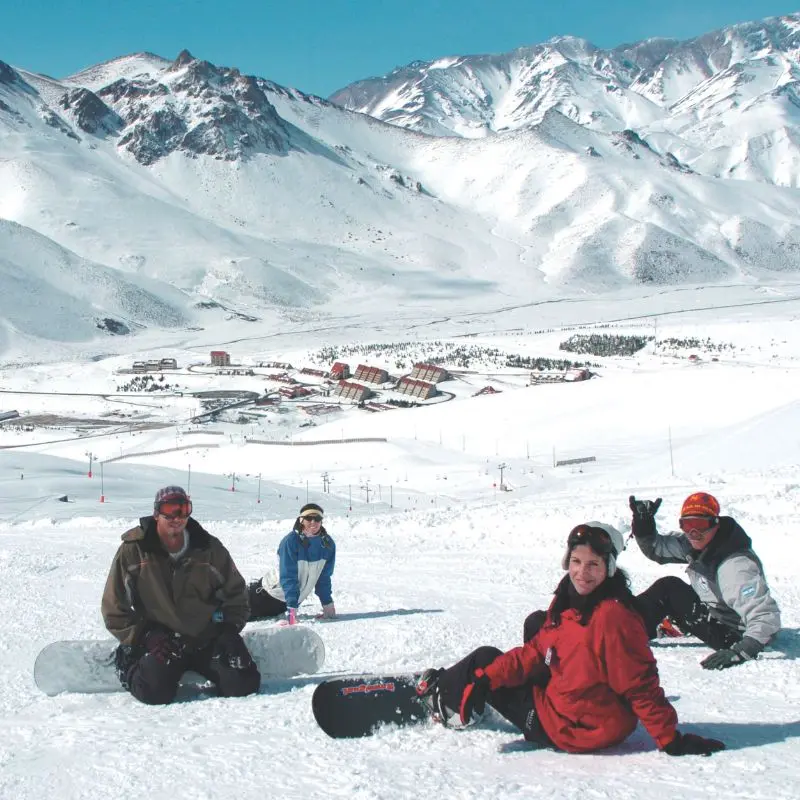
Crossing to Chile: What to Know According to the Weather
The Cristo Redentor international pass connects Mendoza and Santiago. In summer, crossings are generally open and scenic. In winter, snow and ice often lead to full-day or multi-day closures for safety. Spring and autumn can offer favorable conditions, but weather can shift fast. Always check the status of Paso Internacional Los Libertadores before departure.
If the weather becomes uncertain or delays are expected, Uspallata is a reliable base with fuel stations, shops, and overnight lodging.
How to Interpret Weather Forecasts for the High Mountains
Weather forecasts for the high Andes require a specific reading approach. General Mendoza city weather won’t reflect actual mountain conditions.
Use forecast platforms that specialize in mountain terrain. Look at wind chill, gust strength, UV radiation, and precipitation probabilities. Town-specific alerts for Potrerillos, Uspallata, or Las Cuevas will provide much better guidance. Knowing these indicators can prevent getting caught in a storm or missing the chance for a perfect clear-sky hike.
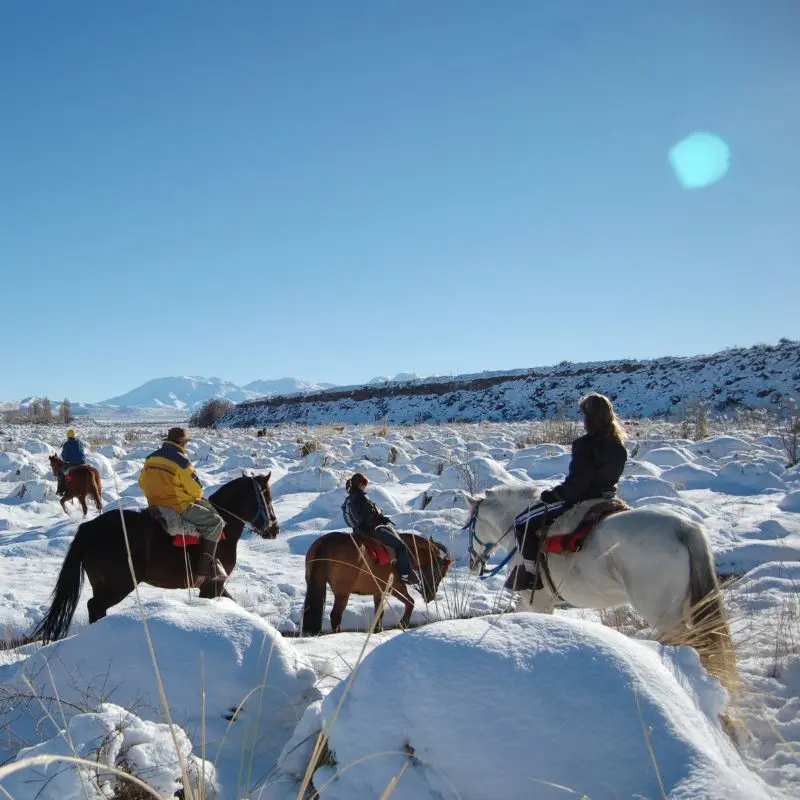
Transport Options and Weather Considerations
- Car travel: Ideal for flexible itineraries. In winter, carry snow chains and drive cautiously—frozen curves and bridges are common. Start early to avoid fog or late descents.
- Bus travel: Good for point-to-point trips to Uspallata or Chile. Buses may turn back if the pass is closed or unsafe.
- Bike travel: Only for experienced cyclists. Thin air, gusts, and high elevation make this a serious physical challenge. Recommended only with a support vehicle.
For any mode, having local advice or a guide ensures safer and better-timed experiences. SAK’s high mountain tours adjust for both forecast and road reports daily.
Weather Alerts and Current Situations in Mendoza’s High Mountains
Staying updated is crucial in the Andes, especially when sudden events affect road access or safety. Official alerts for temporal en alta montaña Mendoza hoy, nevadas en alta montaña Mendoza, or situación en alta montaña Mendoza are shared through local authorities.
Mendoza’s Civil Defense and the Gendarmerie regularly update alert systems that include:
- Snowstorm warnings
- Wind hazard alerts
- Road closures with estimated reopening times
- Avalanche danger reports
Check local FM radio, tourist information centers in Uspallata, and speak to local hosts. When traveling with SAK’s experienced guides, alerts are monitored in real time to adjust your route safely.
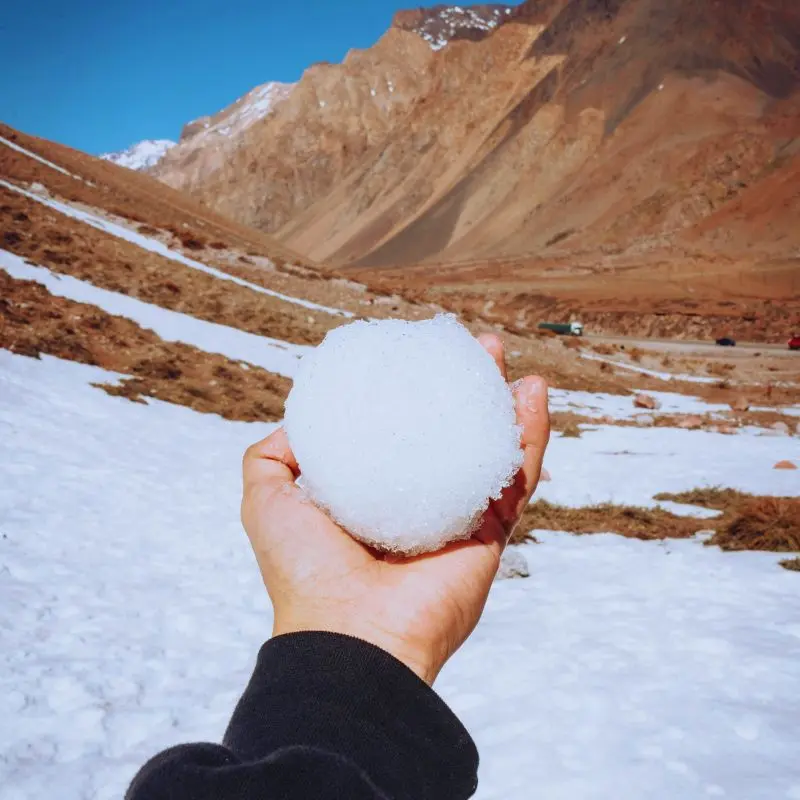
When Is the Best Time to Visit Mendoza’s High Altitude Areas?
The best time depends on your goals:
Spring (September to November) is lush and colorful. Rivers swell with snowmelt, wildflowers bloom, and days are mild—ideal for hikes and photography.
Summer (December to February) offers long days, perfect for adventure sports like rafting, trekking, and ziplining. Although storms can appear in the afternoon, mornings are usually dry and clear.
Autumn (March to May) is Mendoza’s secret season. The landscapes glow with ochre tones, weather is stable, and it’s perfect for peaceful excursions or landscape photography.
Winter (June to August) means snow. If you’re prepared and informed, it’s an incredible time to witness the mountains’ grandeur, play in the snow, and enjoy clear blue skies. Roads may close after Uspallata, but lower-altitude experiences remain accessible.
For all seasons, SAK’s tours to the high mountains are designed to match your preferences and the safest conditions available.
Enjoy the best of the Andes in Mendoza
Preparing for Your Trip: Weather Considerations
Before venturing to the high mountains:
Bring breathable base layers, waterproof jackets, thermal gloves, and snow-friendly shoes if going in winter. Sunglasses with UV protection, high-factor sunscreen, and a refillable water bottle are essentials.
Keep your itinerary flexible. If the weather worsens, towns like Potrerillos and Uspallata offer comfortable overnight stays. Avoid tight return schedules and always verify road conditions in the morning.
Most importantly, check the pronóstico alta montaña Mendoza before departing, and consider joining SAK’s guided tours for a safe and memorable experience.
Stay Informed: Reliable Weather Sources for Mendoza’s High Mountains
- Tourism offices in Potrerillos and Uspallata
- Mendoza Civil Defense and local radios
SAK Wine & Travel updates itineraries daily based on real-time conditions.
Explore Further: Planning Beyond the Forecast
With reliable planning and expert guidance, the Andes reveal their best sides no matter the season. Whether you’re drawn to snowy peaks or crystal lakes, knowing the clima alta montaña Mendoza allows for safe, thrilling, and memorable adventures.
Explore all High Mountain Tours from SAK and choose the one that fits your moment.

Paula is a travel communications specialist with solid expertise in wine tourism and adventure travel in her native Mendoza. She combines a background in audience analysis with a deep understanding of today’s travelers to craft effective, user-centered, and sustainable content strategies. Her approach blends creativity, data, and a strong commitment to the responsible development of tourism in Argentina.


